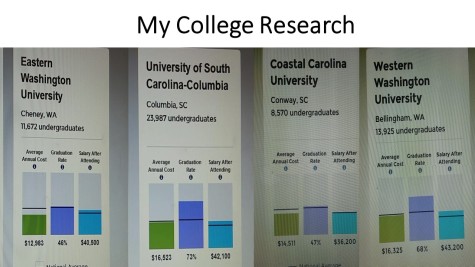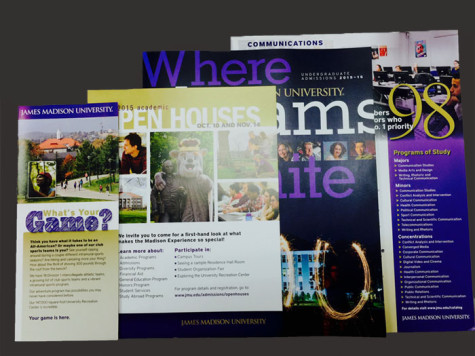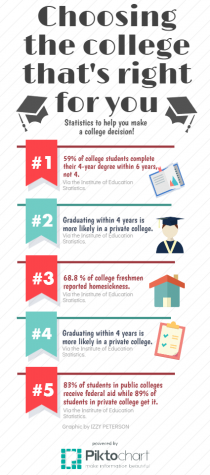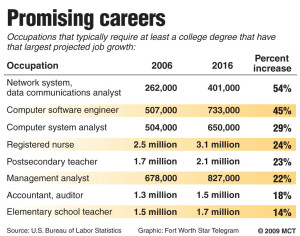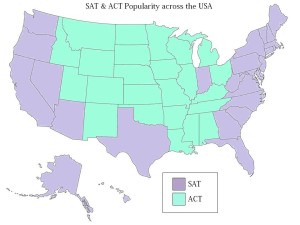Mind the gap…year: Is rushing off to college always the best idea?
May 17, 2015
Today it’s expected that in order to succeed after high school, students must receive a bachelor’s degree and, often, a masters.
But how are teenagers supposed to know what they want to do for a lifetime when all they have seen is one high school curriculum? Graduating from high school is a milestone and to jump right into another one, college, so abruptly, is not always the best path. Gap years aren’t necessarily substitutes for college, simply a stepping stone to learn new skills to apply later in life and in school.
A gap year is the perfect alternative and has proven successful. It allows teens and young adults to explore themselves, a career path, and even the world. How do you know if it’s right for you?
Senior Morgan Buchanan decided to take a gap year to pursue her passion for acting. She plans to devote her time out of school to traveling, auditioning, and working.
“It is important [for me] to learn outside of a classroom and beyond a desk. I want to learn from real-life experiences,” said Buchanan.
Many students decide to backpack across Europe or explore Asia after college. But why wait? Technically, gap years can be taken at any age and for more or less than a full year. Many people choose to take one after they’ve figured out their plan for the next years of their live; others use a gap year as a tool to figure out what they want and how to get there.
A gap year could still mean work: internships and experimental jobs are good ways to get experience for a career without attending school.
“I think some students are unsure as to what they want to do after high school. They may plan to use the time to travel or spend time with family that they have not had time to visit due to school,” said student services chairperson Paula Larson.
Gap years can be quite spiritual, too. They take time away from “normal” life to discover who you are and what you want to be.
“An experience [away from home] is about independence, and self motivation; about being curious and inquisitive, and being creative with what [you’re] learning,” said the mother of a gap year student in an interview with Uncollege, a gap year planning program.
Gap years are not designed for slacking off and watching TV on the couch all year. Students who still wish to go on to college must utilize their gap year to bolster acceptance and scholarships when they do apply. When colleges see a student has taken a year off after high school they want to know why and what happened in that time.
According to Uncollege, Ivy League universities actually encourage gap years; Harvard has seen a 33% increase of gap years among their students.
“He learned how to network. He learned how to believe in himself,” said the mother of an Uncollege gap year student.
Within a month of her son’s second internship he received a job.
Andrew Sumner, a senior at Springbrook High School, is planning to take a gap year in the fall when most of his 2015 high school graduate friends will be going off to college.
“Be aware that some college scholarships may no longer be available,” said Sumner.
Today, more and more college students are taking longer and longer to receive their degrees; college dropout rates are climbing. Stress, money, and a lack of motivation are the main causes of students not receiving a degree.
Many students and their parents are apprehensive about taking a big leap like this. Sumner was originally concerned with the retention rate of students who take a gap year and later go to college; however, according to Desert News National, in a survey of 300 gap year participants, 66% said they took college more seriously after their gap year. In addition, the American Gap Association reports that 90% of students return to school after their gap year. Uncollege’s research shows that gap year students have higher GPA’s, job satisfaction, and degree completion rates.
Another concern for parents is cost. Compared to college, a gap year costs about as much as one year of tuition or less. Uncollege’s program runs $16,000, including six months of room and board. Just like applying to college, students must apply for FAFSA to receive financial aid. The same concept applies for Uncollege’s programs.
Many programs do not include flights, meals, and extra spending so doing your research before-hand is crucial. Real Experience, a gap year planning organization, suggests budgeting be the first step so students know what is available and which program will provide the best experience and best value.
“Everyone has to make their own way in life… so why waste your time and money [on a year of college you won’t enjoy]?” said Dawn Buchanan, Morgan’s mother.
Though gap years do not make up the majority in the US , the UK has been embracing this educational alternative for years. According to The Leap, 2.5 million UK students are planning to take a gap year.
There are several gap year organizations that are designed to help students the entire way. The American Gap Association, Thinking Beyond Borders, Uncollege, and Dynamy are just a few. USA Gap Year Fairs also provides a list of several gap year programs.




